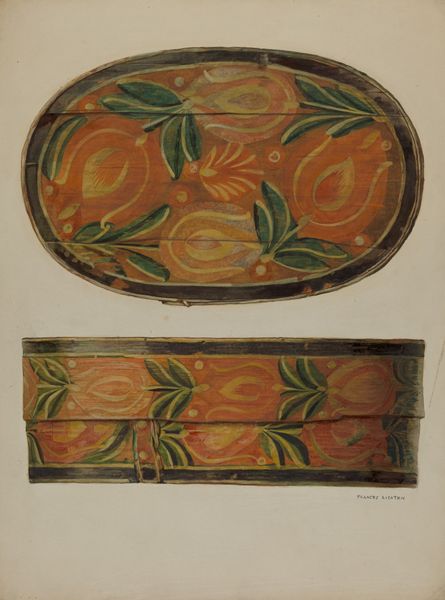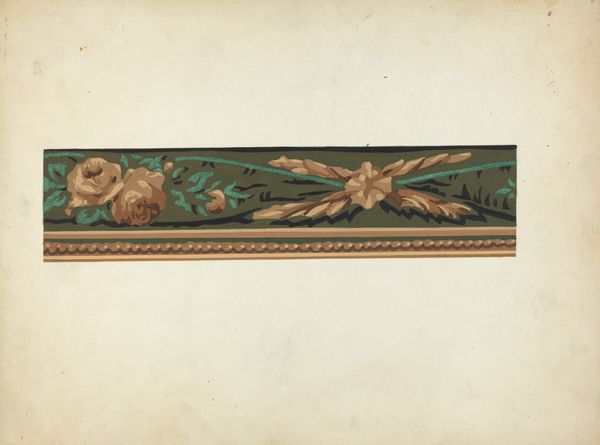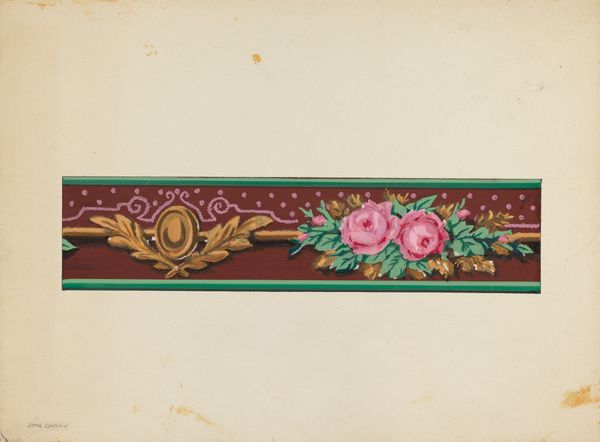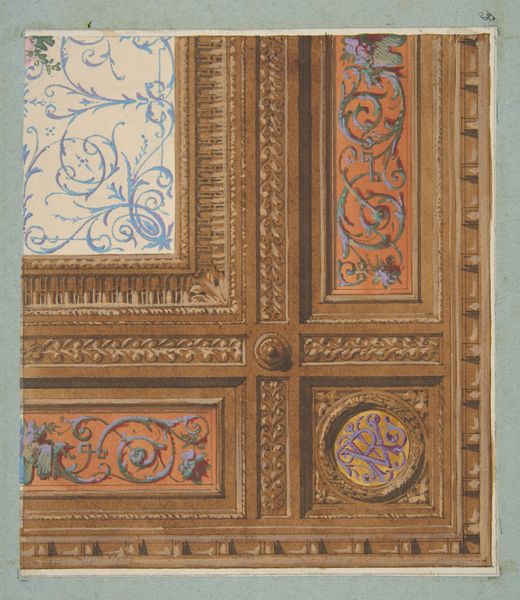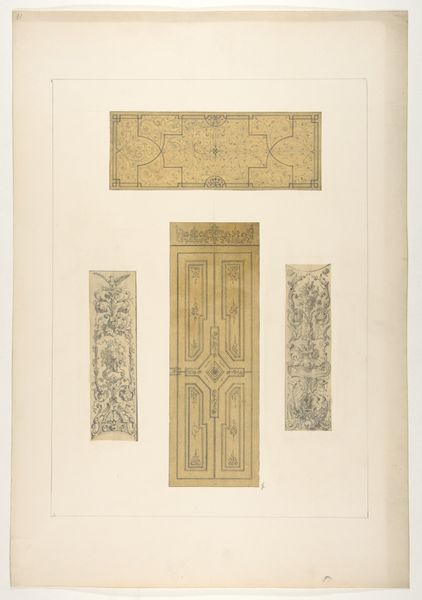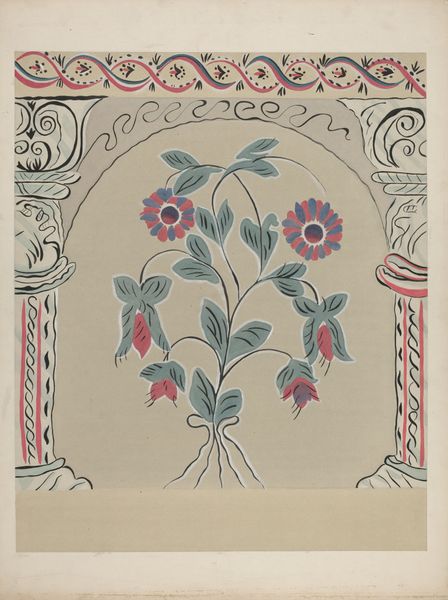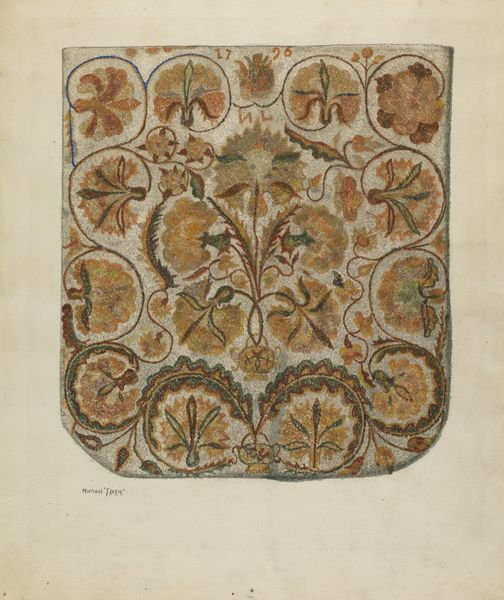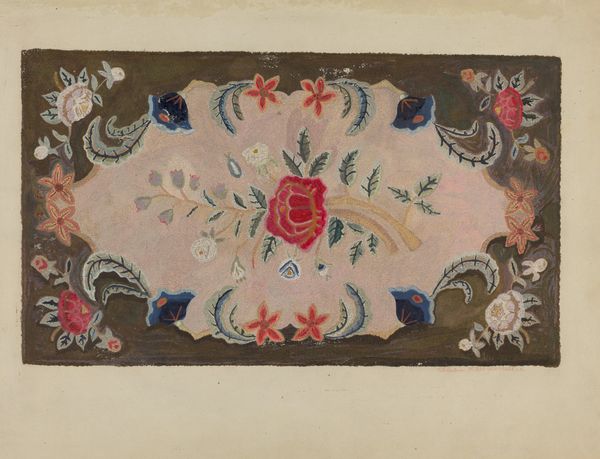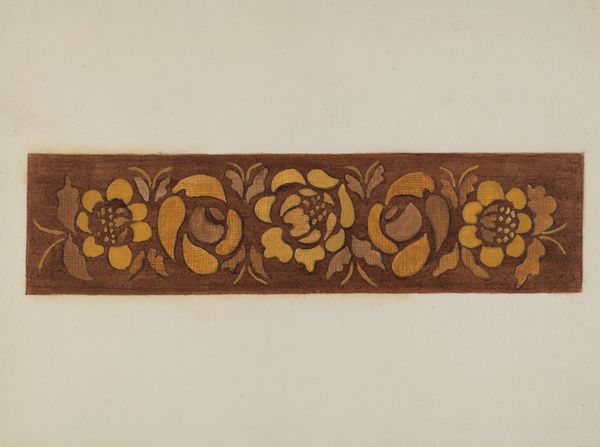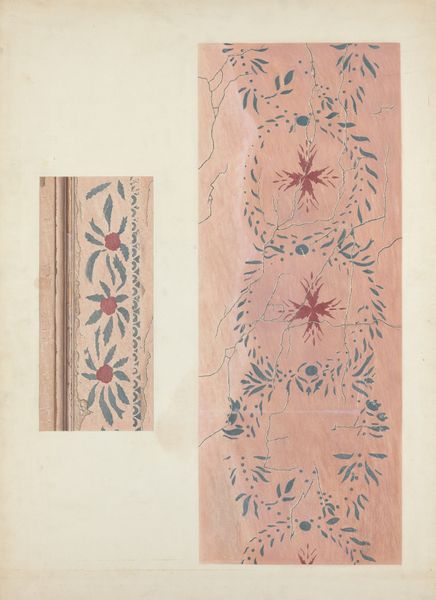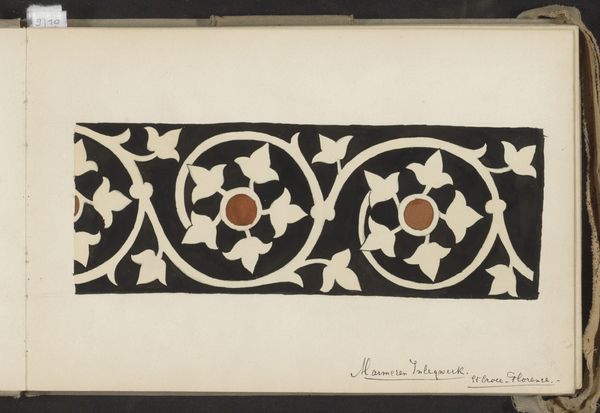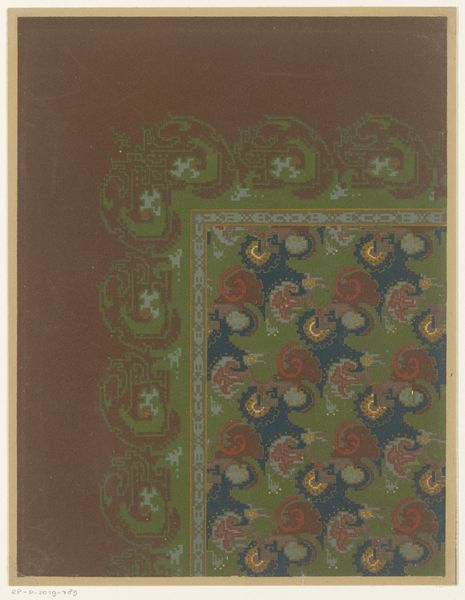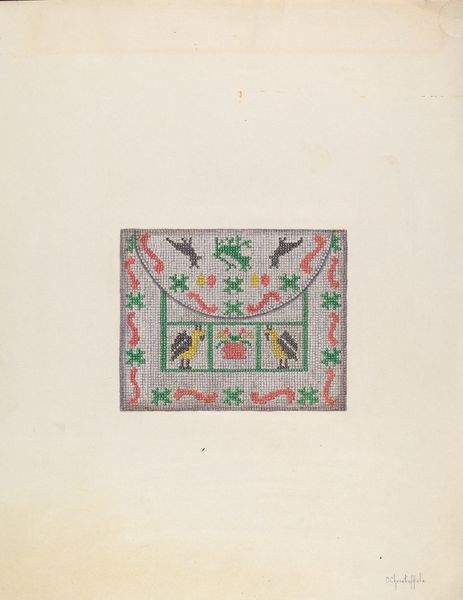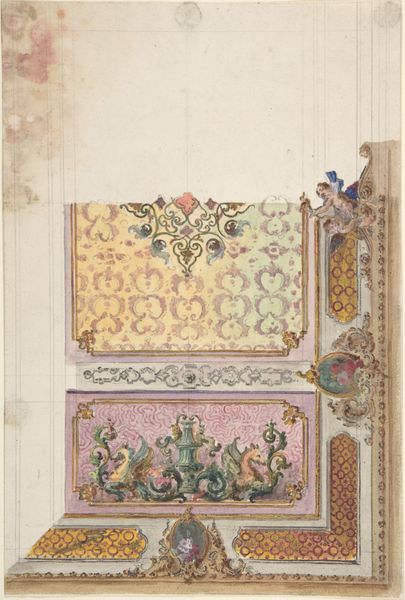
drawing, mixed-media, print
#
drawing
#
mixed-media
# print
#
folk-art
#
watercolour illustration
#
decorative-art
#
decorative art
Dimensions: overall: 43.3 x 24.4 cm (17 1/16 x 9 5/8 in.) Original IAD Object: 9 1/4" wide; 5 1/2" deep; 6 5/8" high
Copyright: National Gallery of Art: CC0 1.0
Curator: Ah, what a curious piece! I’m immediately drawn to the contrast between the rigid structure and the whimsical decorations. Editor: Indeed. We’re looking at a work titled "Toleware Document Box" by Charles Henning, believed to have been created around 1942. It appears to be a mixed-media piece, likely a drawing with print and watercolour illustration techniques involved. The box itself would’ve been crafted with metal. Curator: The interplay of the gold against the dark background, particularly on the lid, strikes me. There's a stylized elegance, almost a Byzantine quality, in the simplified floral forms. Yet, the looseness of the painted flowers feels deliberately folksy. The contrast activates the surface in an appealing way. Editor: Toleware pieces were indeed popular items of folk art in both Europe and America, commonly painted with similar decorations. The late date might reflect a nostalgic revival of traditional craft, possibly spurred by the wartime environment with limited factory produced storage goods. Curator: Note how the scalloped edge detail on the lid's lip creates a gentle rhythm that counterpoints the more angular nature of the box's form. The design pushes against pure utility. Henning seems invested in the pleasure of ornamentation. Editor: That attention to detail would've also been present on similar pieces intended for very public use within the household—from storage to display in the home. Everyday folk pieces reflect prevailing aesthetics but also serve as functional artworks, asserting taste and status, however modest. It reminds us of the way culture gets lived. Curator: Looking at the two halves depicted—one presumably the box and one its lid—I wonder if they are equally considered? The lower one, with the painted blossoms, reads as more visually complex than the other. The floral section seems to disrupt what could be described as a simple pattern arrangement with this element of folk expression, as you put it. Editor: Agreed, that visual tension contributes significantly to its appeal. In that historical tension of art-making and design is really this work’s interest— the confluence of usefulness, style, culture and personal touch of whoever created this piece. Curator: So very true! What a wonderful object for understanding the layered forces shaping material culture. Editor: It’s quite humbling. Examining vernacular forms makes me think about the intersection between personal lives and big historical trends—so often invisible in traditional scholarship.
Comments
No comments
Be the first to comment and join the conversation on the ultimate creative platform.
